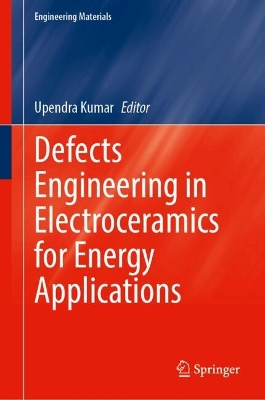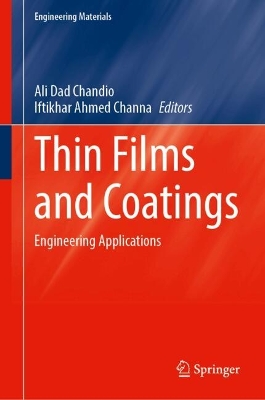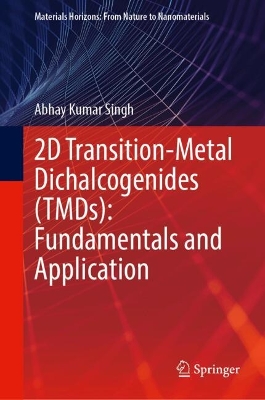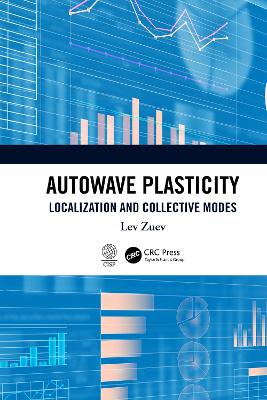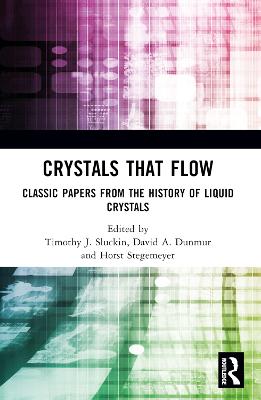Fundamentals of Ceramics
 portes grátis
portes grátis
Fundamentals of Ceramics
Barsoum, Michel
Taylor & Francis Ltd
06/2022
644
Mole
Inglês
9781032337302
15 a 20 dias
1190
Descrição não disponível.
CONTENTS
Series Preface xi
Preface to the Second Edition xiii
Preface to First Edition xv
Author xix
1 Introduction 1
1.1 Introduction 1
1.2 Definition of Ceramics 2
1.3 Elementary Crystallography 3
1.4 Ceramic Microstructures 6
1.5 Traditional versus Advanced Ceramics 6
1.6 General Characteristics of Ceramics 7
1.7 Applications 7
1.8 The Future 9
Additional Reading 11
2 Bonding in Ceramics 13
2.1 Introduction 13
2.2 Structure of Atoms 14
2.3 Ionic versus Covalent Bonding 23
2.4 Ionic Bonding 23
2.5 Ionically Bonded Solids 28
2.6 Covalent Bond Formation 34
2.7 Covalently Bonded Solids 37
2.8 Band Theory of Solids 37
2.9 Summary 49
Appendix 2A: Kinetic Energy of Free Electrons 50
Additional Reading 52
Other References 53
3 Structure of Ceramics 55
3.1 Introduction 55
3.2 Ceramic Structures 57
3.3 Binary Ionic Compounds 62
3.4 Composite Crystal Structures 67
3.5 Structure of Covalent Ceramics 70
3.6 Structure of Layered Ceramics 70
3.7 Structure of Silicates 71
3.8 Lattice Parameters and Density 77
3.9 Summary 85
Appendix 3A 86
Additional Reading 92
Other References 92
4 Effect of Chemical Forces on Physical
Properties 93
4.1 Introduction 93
4.2 Melting Points 94
4.3 Thermal Expansion 99
4.4 Young's Modulus and the Strength of
Perfect Solids 100
4.5 Surface Energy 106
4.6 Frequencies of Atomic Vibrations 108
4.7 Summary 113
Additional Reading 116
Multimedia References and Databases 116
5 Thermodynamic and Kinetic
Considerations 117
5.1 Introduction 117
5.2 Free Energy 118
5.3 Chemical Equilibrium and the Mass Action
Expression 129
5.4 Chemical Stability Domains 130
5.5 Electrochemical Potentials 133
5.6 Charged Interfaces, Double Layers and
Debye Lengths 134
5.7 Gibbs-Duhem Relation for Binary Oxides 135
5.8 Kinetic Considerations 138
5.9 Summary 142
Appendix 5A: Derivation of Eq. (5.27) 142
Additional Reading 145
Thermodynamic Data 145
6 Defects in Ceramics 147
6.1 Introduction 147
6.2 Point Defects 148
6.3 Linear Defects 176
6.4 Planar Defects 178
6.5 Summary 184
Additional Reading 187
7 Diffusion and Electrical Conductivity 189
7.1 Introduction 189
7.2 Diffusion 190
7.3 Electrical Conductivity 206
7.4 Ambipolar Diffusion 224
7.5 Relationships between Self-, Tracer,
Chemical, Ambipolar and Defect Diffusion
Coefficients 236
7.6 Summary 243
Appendix 7A: Relationship between Fick's First
Law and Eq. (7.30) 245
Appendix 7B: Effective Mass and Density of States 246
Appendix 7C: Derivation of Eq. (7.79) 248
Appendix 7D: Derivation of Eq. (7.92) 248
Additional Reading 255
Other References 255
8 Phase Equilibria 257
8.1 Introduction 257
8.2 Phase Rule 258
8.3 One-Component Systems 259
8.4 Binary Systems 262
8.5 Ternary Systems 270
8.6 Free-Energy Composition and Temperature
Diagrams 271
8.7 Summary 276
Additional Reading 277
Phase Diagram Information 278
9 Formation, Structure and Properties of
Glasses 279
9.1 Introduction 279
9.2 Glass Formation 280
9.3 Glass Structure 293
9.4 Glass Properties 295
9.5 Summary 309
Appendix 9A: Derivation of Eq. (9.7) 310
Additional Reading 313
Other References 314
10 Sintering and Grain Growth 315
10.1 Introduction 315
10.2 Solid-State Sintering 317
10.3 Solid-State Sintering Kinetics 327
10.4 Liquid-Phase Sintering 349
10.5 Hot Pressing and Hot Isostatic Pressing 355
10.6 Summary 359
Appendix 10A: Derivation of the Gibbs-
Thompson Equation 360
Appendix 10B: Radii of Curvature 361
Appendix 10C: Derivation of Eq. (10.20) 362
Appendix 10D: Derivation of Eq. (10.22) 363
Additional Reading 367
Other References 368
11 Mechanical Properties: Fast Fracture 369
11.1 Introduction 369
11.2 Fracture Toughness 373
11.3 Atomistic Aspects of Fracture 383
11.4 Strength of Ceramics 385
11.5 Toughening Mechanisms 392
11.6 Designing with Ceramics 399
11.7 Summary 408
Additional Reading 413
12 Creep, Subcritical Crack Growth and
Fatigue 415
12.1 Introduction 415
12.2 Creep 416
12.3 Subcritical Crack Growth 430
12.4 Fatigue of Ceramics 436
12.5 Lifetime Predictions 439
12.6 Summary 450
Appendix 12A: Derivation of Eq. (12.24) 451
Additional Reading 456
13 Thermal Properties 459
13.1 Introduction 459
13.2 Thermal Stresses 460
13.3 Thermal Shock 464
13.4 Spontaneous Microcracking of Ceramics 469
13.5 Thermal Tempering of Glass 472
13.6 Thermal Conductivity 473
13.7 Summary 479
Additional Reading 482
Other Resources 482
14 Linear Dielectric Properties 483
14.1 Introduction 483
14.2 Basic Theory 484
14.3 Equivalent Circuit Description of Linear
Dielectrics 489
14.4 Polarization Mechanisms 494
14.5 Dielectric Loss 513
14.6 Dielectric Breakdown 514
14.7 Capacitors and Insulators 515
14.8 Summary 520
Appendix 14A: Local Electric Field 521
Additional Reading 527
15 Magnetic and Nonlinear Dielectric
Properties 529
15.1 Introduction 529
15.2 Basic Theory 530
15.3 Microscopic Theory 536
15.4 Para-, Ferro-, Antiferro-, and
Ferrimagnetism 540
15.5 Magnetic Domains and Hysteresis Curves 548
15.6 Magnetic Ceramics and Their Applications 552
15.7 Piezo- and Ferroelectric Ceramics 559
15.8 Summary 572
Appendix 15A: Orbital Magnetic Quantum
Number 573
Additional Reading 576
16 Optical Properties 577
16.1 Introduction 577
16.2 Basic Principles 579
16.3 Absorption and Transmission 590
16.4 Scattering and Opacity 596
16.6 Summary 605
Appendix 16A: Coherence 606
Appendix 16B: Assumptions Made in Deriving
Eq. (16.24) 606
Additional Reading 610
Index 611
Series Preface xi
Preface to the Second Edition xiii
Preface to First Edition xv
Author xix
1 Introduction 1
1.1 Introduction 1
1.2 Definition of Ceramics 2
1.3 Elementary Crystallography 3
1.4 Ceramic Microstructures 6
1.5 Traditional versus Advanced Ceramics 6
1.6 General Characteristics of Ceramics 7
1.7 Applications 7
1.8 The Future 9
Additional Reading 11
2 Bonding in Ceramics 13
2.1 Introduction 13
2.2 Structure of Atoms 14
2.3 Ionic versus Covalent Bonding 23
2.4 Ionic Bonding 23
2.5 Ionically Bonded Solids 28
2.6 Covalent Bond Formation 34
2.7 Covalently Bonded Solids 37
2.8 Band Theory of Solids 37
2.9 Summary 49
Appendix 2A: Kinetic Energy of Free Electrons 50
Additional Reading 52
Other References 53
3 Structure of Ceramics 55
3.1 Introduction 55
3.2 Ceramic Structures 57
3.3 Binary Ionic Compounds 62
3.4 Composite Crystal Structures 67
3.5 Structure of Covalent Ceramics 70
3.6 Structure of Layered Ceramics 70
3.7 Structure of Silicates 71
3.8 Lattice Parameters and Density 77
3.9 Summary 85
Appendix 3A 86
Additional Reading 92
Other References 92
4 Effect of Chemical Forces on Physical
Properties 93
4.1 Introduction 93
4.2 Melting Points 94
4.3 Thermal Expansion 99
4.4 Young's Modulus and the Strength of
Perfect Solids 100
4.5 Surface Energy 106
4.6 Frequencies of Atomic Vibrations 108
4.7 Summary 113
Additional Reading 116
Multimedia References and Databases 116
5 Thermodynamic and Kinetic
Considerations 117
5.1 Introduction 117
5.2 Free Energy 118
5.3 Chemical Equilibrium and the Mass Action
Expression 129
5.4 Chemical Stability Domains 130
5.5 Electrochemical Potentials 133
5.6 Charged Interfaces, Double Layers and
Debye Lengths 134
5.7 Gibbs-Duhem Relation for Binary Oxides 135
5.8 Kinetic Considerations 138
5.9 Summary 142
Appendix 5A: Derivation of Eq. (5.27) 142
Additional Reading 145
Thermodynamic Data 145
6 Defects in Ceramics 147
6.1 Introduction 147
6.2 Point Defects 148
6.3 Linear Defects 176
6.4 Planar Defects 178
6.5 Summary 184
Additional Reading 187
7 Diffusion and Electrical Conductivity 189
7.1 Introduction 189
7.2 Diffusion 190
7.3 Electrical Conductivity 206
7.4 Ambipolar Diffusion 224
7.5 Relationships between Self-, Tracer,
Chemical, Ambipolar and Defect Diffusion
Coefficients 236
7.6 Summary 243
Appendix 7A: Relationship between Fick's First
Law and Eq. (7.30) 245
Appendix 7B: Effective Mass and Density of States 246
Appendix 7C: Derivation of Eq. (7.79) 248
Appendix 7D: Derivation of Eq. (7.92) 248
Additional Reading 255
Other References 255
8 Phase Equilibria 257
8.1 Introduction 257
8.2 Phase Rule 258
8.3 One-Component Systems 259
8.4 Binary Systems 262
8.5 Ternary Systems 270
8.6 Free-Energy Composition and Temperature
Diagrams 271
8.7 Summary 276
Additional Reading 277
Phase Diagram Information 278
9 Formation, Structure and Properties of
Glasses 279
9.1 Introduction 279
9.2 Glass Formation 280
9.3 Glass Structure 293
9.4 Glass Properties 295
9.5 Summary 309
Appendix 9A: Derivation of Eq. (9.7) 310
Additional Reading 313
Other References 314
10 Sintering and Grain Growth 315
10.1 Introduction 315
10.2 Solid-State Sintering 317
10.3 Solid-State Sintering Kinetics 327
10.4 Liquid-Phase Sintering 349
10.5 Hot Pressing and Hot Isostatic Pressing 355
10.6 Summary 359
Appendix 10A: Derivation of the Gibbs-
Thompson Equation 360
Appendix 10B: Radii of Curvature 361
Appendix 10C: Derivation of Eq. (10.20) 362
Appendix 10D: Derivation of Eq. (10.22) 363
Additional Reading 367
Other References 368
11 Mechanical Properties: Fast Fracture 369
11.1 Introduction 369
11.2 Fracture Toughness 373
11.3 Atomistic Aspects of Fracture 383
11.4 Strength of Ceramics 385
11.5 Toughening Mechanisms 392
11.6 Designing with Ceramics 399
11.7 Summary 408
Additional Reading 413
12 Creep, Subcritical Crack Growth and
Fatigue 415
12.1 Introduction 415
12.2 Creep 416
12.3 Subcritical Crack Growth 430
12.4 Fatigue of Ceramics 436
12.5 Lifetime Predictions 439
12.6 Summary 450
Appendix 12A: Derivation of Eq. (12.24) 451
Additional Reading 456
13 Thermal Properties 459
13.1 Introduction 459
13.2 Thermal Stresses 460
13.3 Thermal Shock 464
13.4 Spontaneous Microcracking of Ceramics 469
13.5 Thermal Tempering of Glass 472
13.6 Thermal Conductivity 473
13.7 Summary 479
Additional Reading 482
Other Resources 482
14 Linear Dielectric Properties 483
14.1 Introduction 483
14.2 Basic Theory 484
14.3 Equivalent Circuit Description of Linear
Dielectrics 489
14.4 Polarization Mechanisms 494
14.5 Dielectric Loss 513
14.6 Dielectric Breakdown 514
14.7 Capacitors and Insulators 515
14.8 Summary 520
Appendix 14A: Local Electric Field 521
Additional Reading 527
15 Magnetic and Nonlinear Dielectric
Properties 529
15.1 Introduction 529
15.2 Basic Theory 530
15.3 Microscopic Theory 536
15.4 Para-, Ferro-, Antiferro-, and
Ferrimagnetism 540
15.5 Magnetic Domains and Hysteresis Curves 548
15.6 Magnetic Ceramics and Their Applications 552
15.7 Piezo- and Ferroelectric Ceramics 559
15.8 Summary 572
Appendix 15A: Orbital Magnetic Quantum
Number 573
Additional Reading 576
16 Optical Properties 577
16.1 Introduction 577
16.2 Basic Principles 579
16.3 Absorption and Transmission 590
16.4 Scattering and Opacity 596
16.6 Summary 605
Appendix 16A: Coherence 606
Appendix 16B: Assumptions Made in Deriving
Eq. (16.24) 606
Additional Reading 610
Index 611
Este título pertence ao(s) assunto(s) indicados(s). Para ver outros títulos clique no assunto desejado.
Zinc Blende;Max Phase;Orbital Angular Momentum;Al Layers;Vice Versa;DFT Calculation;Liquid Phase Sintering;Transition Metal;Mass Action Expression;Solid State Sintering;Crack Tip;Equivalent Circuit;Thermal Expansion Anisotropy;Rock Salt Structure;Ionic Bond;Phonon Dos;TGO Layer;Complete Solid Solubility;Frenkel Defect;Schottky Defect;Defect Reactions;Domain Walls;Fracture Toughness;Magnetic Ceramics;Hexagonal Ferrites
CONTENTS
Series Preface xi
Preface to the Second Edition xiii
Preface to First Edition xv
Author xix
1 Introduction 1
1.1 Introduction 1
1.2 Definition of Ceramics 2
1.3 Elementary Crystallography 3
1.4 Ceramic Microstructures 6
1.5 Traditional versus Advanced Ceramics 6
1.6 General Characteristics of Ceramics 7
1.7 Applications 7
1.8 The Future 9
Additional Reading 11
2 Bonding in Ceramics 13
2.1 Introduction 13
2.2 Structure of Atoms 14
2.3 Ionic versus Covalent Bonding 23
2.4 Ionic Bonding 23
2.5 Ionically Bonded Solids 28
2.6 Covalent Bond Formation 34
2.7 Covalently Bonded Solids 37
2.8 Band Theory of Solids 37
2.9 Summary 49
Appendix 2A: Kinetic Energy of Free Electrons 50
Additional Reading 52
Other References 53
3 Structure of Ceramics 55
3.1 Introduction 55
3.2 Ceramic Structures 57
3.3 Binary Ionic Compounds 62
3.4 Composite Crystal Structures 67
3.5 Structure of Covalent Ceramics 70
3.6 Structure of Layered Ceramics 70
3.7 Structure of Silicates 71
3.8 Lattice Parameters and Density 77
3.9 Summary 85
Appendix 3A 86
Additional Reading 92
Other References 92
4 Effect of Chemical Forces on Physical
Properties 93
4.1 Introduction 93
4.2 Melting Points 94
4.3 Thermal Expansion 99
4.4 Young's Modulus and the Strength of
Perfect Solids 100
4.5 Surface Energy 106
4.6 Frequencies of Atomic Vibrations 108
4.7 Summary 113
Additional Reading 116
Multimedia References and Databases 116
5 Thermodynamic and Kinetic
Considerations 117
5.1 Introduction 117
5.2 Free Energy 118
5.3 Chemical Equilibrium and the Mass Action
Expression 129
5.4 Chemical Stability Domains 130
5.5 Electrochemical Potentials 133
5.6 Charged Interfaces, Double Layers and
Debye Lengths 134
5.7 Gibbs-Duhem Relation for Binary Oxides 135
5.8 Kinetic Considerations 138
5.9 Summary 142
Appendix 5A: Derivation of Eq. (5.27) 142
Additional Reading 145
Thermodynamic Data 145
6 Defects in Ceramics 147
6.1 Introduction 147
6.2 Point Defects 148
6.3 Linear Defects 176
6.4 Planar Defects 178
6.5 Summary 184
Additional Reading 187
7 Diffusion and Electrical Conductivity 189
7.1 Introduction 189
7.2 Diffusion 190
7.3 Electrical Conductivity 206
7.4 Ambipolar Diffusion 224
7.5 Relationships between Self-, Tracer,
Chemical, Ambipolar and Defect Diffusion
Coefficients 236
7.6 Summary 243
Appendix 7A: Relationship between Fick's First
Law and Eq. (7.30) 245
Appendix 7B: Effective Mass and Density of States 246
Appendix 7C: Derivation of Eq. (7.79) 248
Appendix 7D: Derivation of Eq. (7.92) 248
Additional Reading 255
Other References 255
8 Phase Equilibria 257
8.1 Introduction 257
8.2 Phase Rule 258
8.3 One-Component Systems 259
8.4 Binary Systems 262
8.5 Ternary Systems 270
8.6 Free-Energy Composition and Temperature
Diagrams 271
8.7 Summary 276
Additional Reading 277
Phase Diagram Information 278
9 Formation, Structure and Properties of
Glasses 279
9.1 Introduction 279
9.2 Glass Formation 280
9.3 Glass Structure 293
9.4 Glass Properties 295
9.5 Summary 309
Appendix 9A: Derivation of Eq. (9.7) 310
Additional Reading 313
Other References 314
10 Sintering and Grain Growth 315
10.1 Introduction 315
10.2 Solid-State Sintering 317
10.3 Solid-State Sintering Kinetics 327
10.4 Liquid-Phase Sintering 349
10.5 Hot Pressing and Hot Isostatic Pressing 355
10.6 Summary 359
Appendix 10A: Derivation of the Gibbs-
Thompson Equation 360
Appendix 10B: Radii of Curvature 361
Appendix 10C: Derivation of Eq. (10.20) 362
Appendix 10D: Derivation of Eq. (10.22) 363
Additional Reading 367
Other References 368
11 Mechanical Properties: Fast Fracture 369
11.1 Introduction 369
11.2 Fracture Toughness 373
11.3 Atomistic Aspects of Fracture 383
11.4 Strength of Ceramics 385
11.5 Toughening Mechanisms 392
11.6 Designing with Ceramics 399
11.7 Summary 408
Additional Reading 413
12 Creep, Subcritical Crack Growth and
Fatigue 415
12.1 Introduction 415
12.2 Creep 416
12.3 Subcritical Crack Growth 430
12.4 Fatigue of Ceramics 436
12.5 Lifetime Predictions 439
12.6 Summary 450
Appendix 12A: Derivation of Eq. (12.24) 451
Additional Reading 456
13 Thermal Properties 459
13.1 Introduction 459
13.2 Thermal Stresses 460
13.3 Thermal Shock 464
13.4 Spontaneous Microcracking of Ceramics 469
13.5 Thermal Tempering of Glass 472
13.6 Thermal Conductivity 473
13.7 Summary 479
Additional Reading 482
Other Resources 482
14 Linear Dielectric Properties 483
14.1 Introduction 483
14.2 Basic Theory 484
14.3 Equivalent Circuit Description of Linear
Dielectrics 489
14.4 Polarization Mechanisms 494
14.5 Dielectric Loss 513
14.6 Dielectric Breakdown 514
14.7 Capacitors and Insulators 515
14.8 Summary 520
Appendix 14A: Local Electric Field 521
Additional Reading 527
15 Magnetic and Nonlinear Dielectric
Properties 529
15.1 Introduction 529
15.2 Basic Theory 530
15.3 Microscopic Theory 536
15.4 Para-, Ferro-, Antiferro-, and
Ferrimagnetism 540
15.5 Magnetic Domains and Hysteresis Curves 548
15.6 Magnetic Ceramics and Their Applications 552
15.7 Piezo- and Ferroelectric Ceramics 559
15.8 Summary 572
Appendix 15A: Orbital Magnetic Quantum
Number 573
Additional Reading 576
16 Optical Properties 577
16.1 Introduction 577
16.2 Basic Principles 579
16.3 Absorption and Transmission 590
16.4 Scattering and Opacity 596
16.6 Summary 605
Appendix 16A: Coherence 606
Appendix 16B: Assumptions Made in Deriving
Eq. (16.24) 606
Additional Reading 610
Index 611
Series Preface xi
Preface to the Second Edition xiii
Preface to First Edition xv
Author xix
1 Introduction 1
1.1 Introduction 1
1.2 Definition of Ceramics 2
1.3 Elementary Crystallography 3
1.4 Ceramic Microstructures 6
1.5 Traditional versus Advanced Ceramics 6
1.6 General Characteristics of Ceramics 7
1.7 Applications 7
1.8 The Future 9
Additional Reading 11
2 Bonding in Ceramics 13
2.1 Introduction 13
2.2 Structure of Atoms 14
2.3 Ionic versus Covalent Bonding 23
2.4 Ionic Bonding 23
2.5 Ionically Bonded Solids 28
2.6 Covalent Bond Formation 34
2.7 Covalently Bonded Solids 37
2.8 Band Theory of Solids 37
2.9 Summary 49
Appendix 2A: Kinetic Energy of Free Electrons 50
Additional Reading 52
Other References 53
3 Structure of Ceramics 55
3.1 Introduction 55
3.2 Ceramic Structures 57
3.3 Binary Ionic Compounds 62
3.4 Composite Crystal Structures 67
3.5 Structure of Covalent Ceramics 70
3.6 Structure of Layered Ceramics 70
3.7 Structure of Silicates 71
3.8 Lattice Parameters and Density 77
3.9 Summary 85
Appendix 3A 86
Additional Reading 92
Other References 92
4 Effect of Chemical Forces on Physical
Properties 93
4.1 Introduction 93
4.2 Melting Points 94
4.3 Thermal Expansion 99
4.4 Young's Modulus and the Strength of
Perfect Solids 100
4.5 Surface Energy 106
4.6 Frequencies of Atomic Vibrations 108
4.7 Summary 113
Additional Reading 116
Multimedia References and Databases 116
5 Thermodynamic and Kinetic
Considerations 117
5.1 Introduction 117
5.2 Free Energy 118
5.3 Chemical Equilibrium and the Mass Action
Expression 129
5.4 Chemical Stability Domains 130
5.5 Electrochemical Potentials 133
5.6 Charged Interfaces, Double Layers and
Debye Lengths 134
5.7 Gibbs-Duhem Relation for Binary Oxides 135
5.8 Kinetic Considerations 138
5.9 Summary 142
Appendix 5A: Derivation of Eq. (5.27) 142
Additional Reading 145
Thermodynamic Data 145
6 Defects in Ceramics 147
6.1 Introduction 147
6.2 Point Defects 148
6.3 Linear Defects 176
6.4 Planar Defects 178
6.5 Summary 184
Additional Reading 187
7 Diffusion and Electrical Conductivity 189
7.1 Introduction 189
7.2 Diffusion 190
7.3 Electrical Conductivity 206
7.4 Ambipolar Diffusion 224
7.5 Relationships between Self-, Tracer,
Chemical, Ambipolar and Defect Diffusion
Coefficients 236
7.6 Summary 243
Appendix 7A: Relationship between Fick's First
Law and Eq. (7.30) 245
Appendix 7B: Effective Mass and Density of States 246
Appendix 7C: Derivation of Eq. (7.79) 248
Appendix 7D: Derivation of Eq. (7.92) 248
Additional Reading 255
Other References 255
8 Phase Equilibria 257
8.1 Introduction 257
8.2 Phase Rule 258
8.3 One-Component Systems 259
8.4 Binary Systems 262
8.5 Ternary Systems 270
8.6 Free-Energy Composition and Temperature
Diagrams 271
8.7 Summary 276
Additional Reading 277
Phase Diagram Information 278
9 Formation, Structure and Properties of
Glasses 279
9.1 Introduction 279
9.2 Glass Formation 280
9.3 Glass Structure 293
9.4 Glass Properties 295
9.5 Summary 309
Appendix 9A: Derivation of Eq. (9.7) 310
Additional Reading 313
Other References 314
10 Sintering and Grain Growth 315
10.1 Introduction 315
10.2 Solid-State Sintering 317
10.3 Solid-State Sintering Kinetics 327
10.4 Liquid-Phase Sintering 349
10.5 Hot Pressing and Hot Isostatic Pressing 355
10.6 Summary 359
Appendix 10A: Derivation of the Gibbs-
Thompson Equation 360
Appendix 10B: Radii of Curvature 361
Appendix 10C: Derivation of Eq. (10.20) 362
Appendix 10D: Derivation of Eq. (10.22) 363
Additional Reading 367
Other References 368
11 Mechanical Properties: Fast Fracture 369
11.1 Introduction 369
11.2 Fracture Toughness 373
11.3 Atomistic Aspects of Fracture 383
11.4 Strength of Ceramics 385
11.5 Toughening Mechanisms 392
11.6 Designing with Ceramics 399
11.7 Summary 408
Additional Reading 413
12 Creep, Subcritical Crack Growth and
Fatigue 415
12.1 Introduction 415
12.2 Creep 416
12.3 Subcritical Crack Growth 430
12.4 Fatigue of Ceramics 436
12.5 Lifetime Predictions 439
12.6 Summary 450
Appendix 12A: Derivation of Eq. (12.24) 451
Additional Reading 456
13 Thermal Properties 459
13.1 Introduction 459
13.2 Thermal Stresses 460
13.3 Thermal Shock 464
13.4 Spontaneous Microcracking of Ceramics 469
13.5 Thermal Tempering of Glass 472
13.6 Thermal Conductivity 473
13.7 Summary 479
Additional Reading 482
Other Resources 482
14 Linear Dielectric Properties 483
14.1 Introduction 483
14.2 Basic Theory 484
14.3 Equivalent Circuit Description of Linear
Dielectrics 489
14.4 Polarization Mechanisms 494
14.5 Dielectric Loss 513
14.6 Dielectric Breakdown 514
14.7 Capacitors and Insulators 515
14.8 Summary 520
Appendix 14A: Local Electric Field 521
Additional Reading 527
15 Magnetic and Nonlinear Dielectric
Properties 529
15.1 Introduction 529
15.2 Basic Theory 530
15.3 Microscopic Theory 536
15.4 Para-, Ferro-, Antiferro-, and
Ferrimagnetism 540
15.5 Magnetic Domains and Hysteresis Curves 548
15.6 Magnetic Ceramics and Their Applications 552
15.7 Piezo- and Ferroelectric Ceramics 559
15.8 Summary 572
Appendix 15A: Orbital Magnetic Quantum
Number 573
Additional Reading 576
16 Optical Properties 577
16.1 Introduction 577
16.2 Basic Principles 579
16.3 Absorption and Transmission 590
16.4 Scattering and Opacity 596
16.6 Summary 605
Appendix 16A: Coherence 606
Appendix 16B: Assumptions Made in Deriving
Eq. (16.24) 606
Additional Reading 610
Index 611
Este título pertence ao(s) assunto(s) indicados(s). Para ver outros títulos clique no assunto desejado.
Zinc Blende;Max Phase;Orbital Angular Momentum;Al Layers;Vice Versa;DFT Calculation;Liquid Phase Sintering;Transition Metal;Mass Action Expression;Solid State Sintering;Crack Tip;Equivalent Circuit;Thermal Expansion Anisotropy;Rock Salt Structure;Ionic Bond;Phonon Dos;TGO Layer;Complete Solid Solubility;Frenkel Defect;Schottky Defect;Defect Reactions;Domain Walls;Fracture Toughness;Magnetic Ceramics;Hexagonal Ferrites

